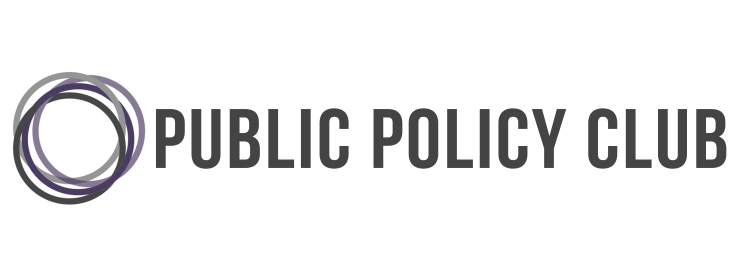By Callia Drinkwater
Bested only by China and Australia, the European Union is New Zealand’s third-largest trading partner. [1] In 2008, New Zealand entered a Free Trade Agreement (FTA) with China, [2] and in 2018 an agreement with Australia, but in 2020 we’ve still got standard tariffs with Europe. From the outset, it would seem that the EU and NZ both have similar environmental and social objectives and policies, and want to push back against protectionism. So why was the eighth round of discussions concluded in July of 2020 with no agreement to show? Three big issues stand in the way of an EU-NZ FTA, and from food to cars, nothing goes untouched.
The Fight for Le Grand Fromage
Perhaps the most unique aspect of these negotiations is the role of intellectual property concerning food production. Currently, in your nearest New World you can find a locally produced halloumi or havarti cheese, or perhaps some South Island Jersey Bennie potatoes. But in an EU-NZ deal, these items could be among the 2,000 products exclusive to a region. This is similar to how Champagne can only come from the region of Champagne in France and otherwise cannot bear the name. Any cheese marketed as halloumi must come from Cyprus, havarti from Denmark, and the humble Jersey Bennie from the island of Jersey. [3] For local food manufacturers, this would prove troublesome as they are no longer able to market their product in a way which is recognisable to the consumer. For the dairy industry, this is a particular concern as a large proportion of the items are varieties of cheese which are only recognisable by their European ancestor.
Agricultural Protectionism
On the conclusion of the eighth round of negotiations, Trade Minister David Parker accused the European Union of agricultural protectionism, flying in the face of the EU’s anti-protectionism doctrine. [4] This was said in retaliation to the tariff-rate quota of 15,000 tonnes of cheese over the space of a decade. Despite sounding generous, this allows for the import of approximately 3g of kiwi cheese for each EU citizen annually, while in 2019 kiwis imported from the EU just under a kilo of cheese per person. From a New Zealand perspective, this seems unacceptable as dairy is an incredibly important industry, making up approximately 5% of our GDP,and in 2019 was worth NZ$19.7 billion in exports. [5] In response to this, Andrew Hoggard from Federated Farmers National said the EU would have to offer a much better deal, particularly because any concessions made now could set a precedent for other trade negotiations. [6] For the EU, this is equally as challenging as they, unlike New Zealand, actually have to use a significant amount of their annual budget supporting local farming; in 2018 almost 38% of the EU budget was invested into agriculture. [7] In light of this, the EU must ensure its farmers are not undercut by imports. Equally as important is the fact that the EU has recently made concessions in relation to this in the Mercosur (South American) agreement, and the Canadian agreement. Having already compromised, the EU will be less willing to offer further concessions.
Customs Fees
So far, the majority of these issues have been concerning the EU’s specific regulations. However, in the most recent report from the European Commission, they stated it was actually the customs fees imposed by New Zealand that were the most sensitive issue in the text. [8] These customs fees refer to the $55.71 charge per import at the border. This fee is made up of an Import Entry Transaction Fee, and a Ministry of Primary Industry’s biosecurity system levy. [9]
Beyond these three key issues, there is also a tremendous amount of context which must be considered when examining an EU-NZ FTA. The most dramatic one is the consequences of Brexit, which is due to take place at the end of 2020. Depending on the deal struck between the EU and Britain, and the negotiations between NZ and Britain, this could change how the EU and NZ wish to continue in their discussions. Another simpler factor is the lack of urgency for the EU to finalise this agreement. Even in the extreme context of NZ leaving the EU market entirely, the EU would not suffer significantly as NZ remains its 49th biggest trade partner. [10] For NZ, however, the EU remains our third largest trade partner. As an indication of its importance to New Zealand, in early 2020 Simon Bridges declared that if the National Party were to win the election, a trade deal with the EU would be the National Party’s top trade priority. [11]
For those supporting such an agreement, the prospect of convincing the EU to compromise long-held elements of their system for a small island in the Pacific seems bleak at best. However, on the conclusion of the 2020 negotiations the European Commission stated that constructive progress was made in the environmental sector, a significant improvement on the troubles from only six months prior. [12] Progress is being made, with an FTA surely on the horizon.

Sources:
- https://www.stats.govt.nz/information-releases/goods-and-services-trade-by-country-year-ended-june-2019#:~:text=New%20Zealand’s%20top%20three%20trade,the%20rest%20of%20the%20world
- https://www.mfat.govt.nz/en/trade/free-trade-agreements/free-trade-agreements-in-force/china-fta/nz-china-fta-overview/
- https://www.mfat.govt.nz/en/trade/free-trade-agreements/agreements-under-negotiation/eu-fta/geographical-indications/
- https://www.nzherald.co.nz/business/a-very-negative-signal-trade-minister-david-parker-accuses-european-union-of-protectionism/SRBFSFCMIYTG5HBAP7WCFEMS3A/
- https://www.dcanz.com/about-the-nz-dairy-industry/#:~:text=In%2030%20years%2C%20dairy%20exports,%25%20in%20four%20of%20those
- https://www.newsroom.co.nz/slow-progress-on-eu-trade-talks
- https://eufactcheck.eu/factcheck/true-80-percent-of-the-european-money-for-agriculture-goes-to-the-20-percent-largest-farmers/#:~:text=EU%20agricultural%20budget&text=In%202018%2C%20almost%2038%20percent,market%20regulation%20and%20rural%20development.
- https://trade.ec.europa.eu/doclib/docs/2020/july/tradoc_158860.pdf
- https://www.customs.govt.nz/personal/send-and-receive-items/receive-items-from-overseas/
- https://trade.ec.europa.eu/doclib/docs/2006/september/tradoc_122530.pdf
- https://www.newsroom.co.nz/slow-progress-on-eu-trade-talks
- https://www.newsroom.co.nz/obstacles-remain-to-a-free-trade-deal-with-the-eu




